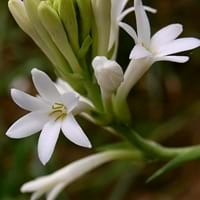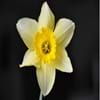Color
Orange, Pink, Purple, Red, Yellow
Pink, White, Yellow
Color Meaning
Orange - Satisfaction and Passion, Pink - Sensitivity and Love, Purple - Elegance and Pride, Red - Courage, Desire and Love, Yellow - Happiness and Friendship
Pink - Sensitivity and Love, White - Purity and Innocence, Yellow - Happiness and Friendship
Fragrance
Floral
Aromatic
Line
Not Available
Not Available
Silhouette
Not Available
Not Available
Blossom Texture
Not Available
Not Available
Form
Not Available
Not Available
Sunlight
Full Sun, Part Sun
Full Sun
Type of Soil
Sandy
Well-drained, Sandy
Essential Fertilizers
Nitrogen
Lime stone, Nitrogen
Common Pests and Diseases
List of Pests
Aphids, Mites, Nematodes, Slugs, Snails, Spider Mites
Aphids, Mites, Thrips
List of Diseases
Gray Molds, Root Rot, Stem Rot
Nematodes, Stem Rot
Bloom Time
Spring Season
Late-Summer Season, Mid-Summer Season
Origin
China, Greece, Iran, Persia, Siberia, Turkey, Ukraine
Mexico
Interesting Facts of
- Tulip is the national flower of Turkey and Afghanistan and its name is originated from Turkish word 'Turbin'.
- On Valentine's Day Tulip is the second most popular flower to send after roses.
- Tuberose flower blooms only at night and it is the only time when it is active. Due to this these are also called as “Night Queen”, “Mistress of the Night”, or “Raat ki Raani” in Hindi.
- In Hawaiian weddings, it is a tradition for the bride to wear a Tuberose wreath.
.
Lifespan
Annuals - complete its full life cycle in one growing season, Perennials - a plant that lives for three or more years
Perennials - a plant that lives for three or more years
Flower Meaning
Not Available
Astrological Flower
Not Available
Birth Month Flower
Not Available
Flower Availability
Not Available
Uses
Not Available
Not Available
Health Benefits
Best remedy for Cough & Cold, Reduces risk of cancer, Used for sinus pain, hay fever and headache
Good remedy for Diarrhea, Prevents Intestinal Ulcers
Medicinal Uses
Have diuretic properties, It has anti-septic properties
Acts as a antidepressant, Acts as a antispasmodic, Acts as an anti-inflammatory
Culinary Uses
NA
Used in salads, soups and sandwiches
Design Uses
Not Available
Cosmetic Uses
Best for Dry sensitive skin, Used in creams, hand lotions and in essential oils, Used in Perfumes
Used in Perfumes, Utilized in making essential oils
Occasional Uses
Father's Day, Friendship Day, Mother's Day, Wedding
Decoration, Wedding
Common Name
Not Available
Scientific Name
Tulipa
Polianthes tuberosa
Sub kingdom
Tracheobionta
Tracheobionta
Super Division
Spermatophyte
Spermatophyte
Division
Magnoliophyta
Magnoliophyta
Order
Liliales
Asparagales
Class
Liliopsida
Magnoliopsida
Family
Liliaceae
Asparagaceae
Sub Family
Lilioideae
Agavoideae
Genus
Not Available
Not Available
Number of Species
Not Available
Not Available
More about Tulip and Tuberose Facts and color
You must be curious to know more about Tulip and Tuberose facts and color. flowers.comparespecies.com will let you know all the Interesting Facts about Tulip and Tuberose. Tulip comes in Orange, Pink, Purple, Red, Yellow colors whereas Tuberose flowers are with Pink, White, Yellow colors. Other Tulip and Tuberose facts will definitely amuse you.
Tulip and Tuberose growing conditions
Absolute growing condition is the only key to keep plants in good health and in good shape. Let’s learn about essential Tulip and Tuberose growing conditions. Tulip requires Full Sun, Part Sun and Enough watering with 6.00 of Sandy soil. Tuberose needs Full Sun and Enough watering with 6.50 of Well-drained, Sandy soil. Get other Tulip and Tuberose facts in the sections below.
Tulip and Tuberose Facts
Want to know about Tulip and Tuberose facts? Get all the Tulip and Tuberose facts here.
Tulip and Tuberose Classification
After knowing about various Tulip and Tuberose facts, let's study their classification. Based on genetic and physical features, Tulip and Tuberose classification starts with knowing their scientific name. The scientific name of Tulip and Tuberose is Tulipa and Polianthes tuberosa respectively. Tulip belongs to Liliaceae family whereas Tuberose falls under Asparagaceae family. Also check out Flowers by Color so as to plant colorful aroma in the garden.





